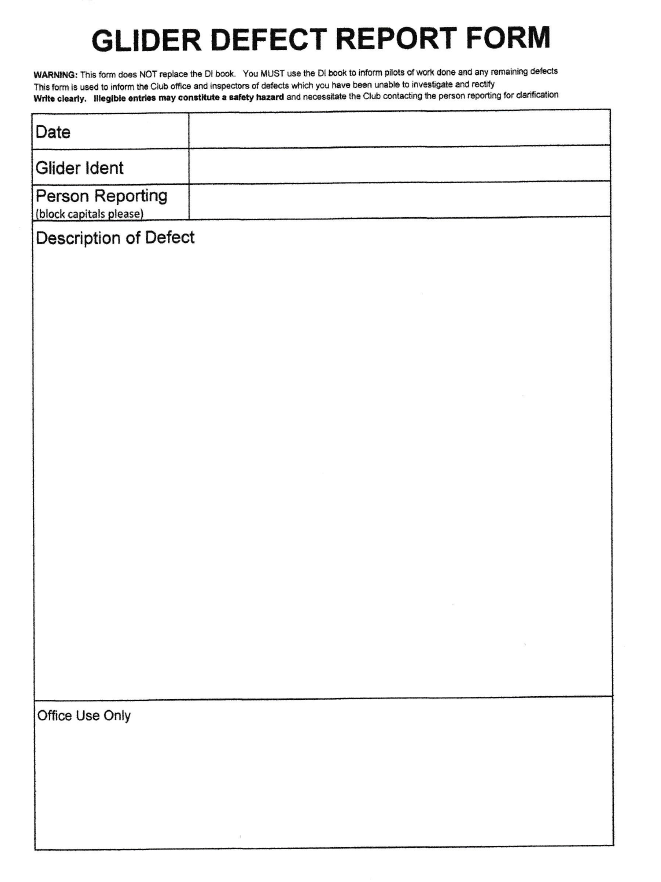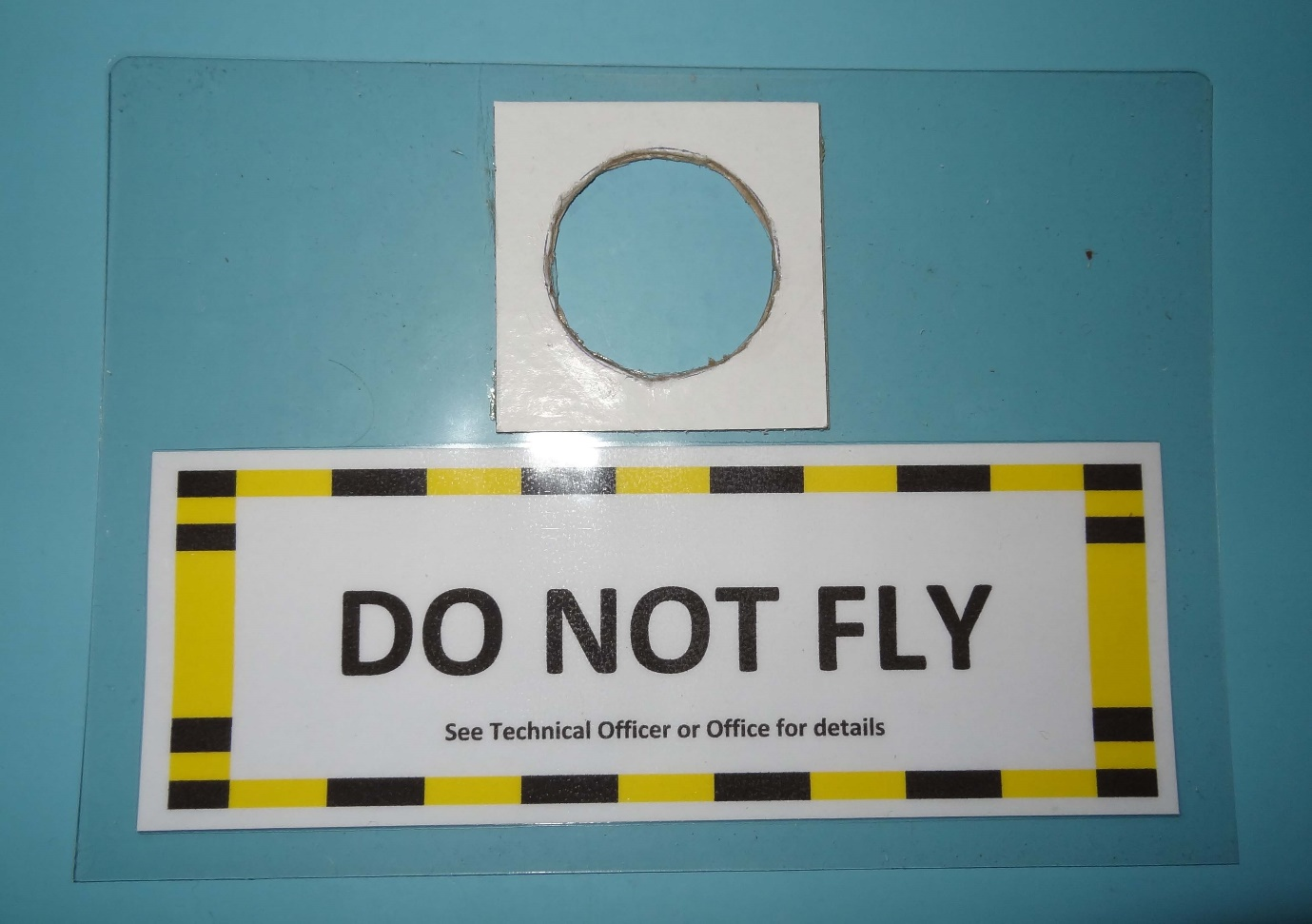Table of Contents
Reporting Defects in Club Gliders
1. Purpose
The prompt identification and recording of defects in gliders is essential to flight safety and to enabling timely rectification. The nature of club operations means that direct contact between pilots and maintainers is not always possible. The purpose of this procedure is to describe the methods by which the club will facilitate this communication and in particular:
- How information will be provided to pilots concerning the serviceability state of gliders.
- How pilots should report defects they find.
2. Precedence
In the event of a conflict between this procedure and any instruction or regulation issued by EASA, the UK CAA or the BGA, the instructions issued by EASA, the CAA and the BGA are to take precedence.
3. Notification of Defects
On discovering a defect in a glider in the club fleet, the person finding the defect must:
- Record it in the glider DI book.
- Complete a Glider Defect Report and hand it in to the club office. If the office is unmanned, place the report between the sliding glass panes of the office window. Blank Defect Report forms can be found next to the serviceability state board in the clubhouse corridor. The format of the Report Form is shown below. It is important that you put your name on the Defect Report Form in case the inspector investigating the defect needs more information.
- If, in the opinion of the person reporting the defect, the glider should not be flown, change the state on the serviceability state board to U/S and place a DO NOT FLY warning flag of the type shown in Annex B over the stick in the glider cockpit. In the case of 2-seaters, the flag should be placed in the front cockpit. Warning flags can be found next to the serviceability state board in the clubhouse corridor.
- If possible, in addition to the above, brief the Technical Officer or an inspector directly.
4. Information to Pilots
Information on the serviceability of gliders is provided to pilots in 2 places:
- On the state board in the clubhouse corridor. The information on the board will be limited to S or U/S and a brief description of the reason for unserviceability.
- In the glider cockpit.
- Entries in the DI book.
- If applicable, a DO NOT FLY warning flag.
5. Rectification
The Technical Officer and other inspectors will review regularly the defects reported to the office. When faults have been rectified, a note will be made in the DI book and, when applicable, in the glider log book. Any DO NOT FLY warning flag in the cockpit will be returned to the Clubhouse.
Where possible and when deemed beneficial, feedback on the diagnosis and rectification of the defect will be provided to the pilot who reported it. Sometimes rectification work will be deferred to the next suitable opportunity, such as an Annual Inspection. In this case, the defect will be added to the board in the Technical Office.
6. Glider Defect Report Form

